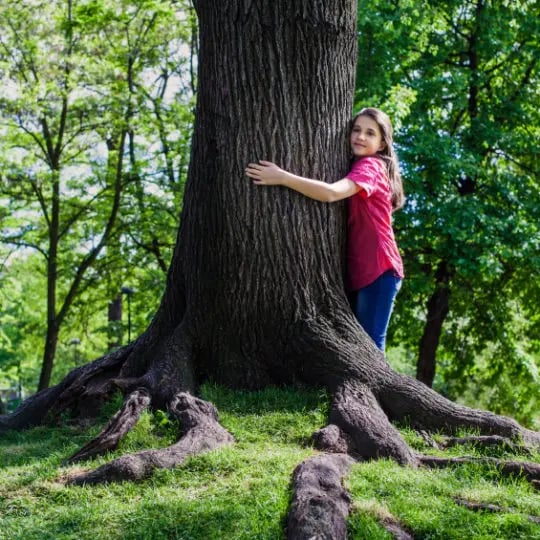Top 5 Tips for Arbor Day Tree Care

A symbol of life throughout history, trees still play an important role in our lives. Besides providing our planet with a beautiful landscape, they serve as shelter from the sun, wind, and erosion; create homes for wildlife; and provide a variety of products that we use in our daily lives like paper, furniture, and houses.
Arbor Day is an annual observance to promote the planting and care of trees. First observed in the United States in 1872, it was founded by pioneer J. Sterling Morton when he moved out to Nebraska. As part of that first celebration, an estimated one million trees were planted!
Tips to help you better care for your trees this Arbor Day
- Mulching: Using bark mulch or wood chips to surround a tree’s base provides a variety of benefits. When applied correctly, mulch can improve the soil, limit weed growth, protect the tree’s roots, and control temperature and moisture. A layer of mulch should be approximately 2 to 4 inches high, with the diameter of the circle expanding 3 or more feet, depending on the size of the tree. Take care not to let the mulch rest against the base of the trunk.
- Watering: Newly planted trees should be watered more frequently than established ones. Water the soil around the outer edges of the tree’s branches (referred to as the “drip line”) until the soil is moist, but not soaked. Water slowly, rather than a quick drenching, to ensure that the water goes deep to the roots. How much and how often you water a tree depends on many factors, like the area’s climate and rainfall, so when in doubt, consult a professional. Usually, if there has not been significant rainfall during the past week, it’s good to water a tree once or twice every seven days.
- Fertilizing: Feeding your trees fertilizer provides them with the proper nutrients to grow tall and strong, which in turn protects them from harmful diseases and insects. Apply the fertilizer out to the tree’s drip line, but at least a foot away from the trunk. The best times to fertilize are late fall and early spring. Make sure to follow the directions on the fertilizer’s label to ensure you’re using the accurate amount.
- Pruning: Trees are pruned to remove dead or damaged branches, encourage new growth, or give a particular shape. This procedure must be done with care in order not to cause damage. Using properly cleaned and sharpened tools, make the cut at a bud or lateral branch to help prevent stem rot and growth in the wrong direction. Only cut what you absolutely must and never remove more than 25 percent of the tree’s branches.
- Winterizing: Trees enter into a dormant phase in late fall, so newly planted ones sometimes need our help to stay protected and healthy during harsh winter conditions. Keeping trees properly pruned, watered, fed, and mulched go a long way in providing them with the strength they need to thrive during the winter months.
If you know of an impending storm, you can wrap burlap fabric around the lower trunks of new trees to provide some protection against the elements. Also, placing wire mesh around the trunk can protect it from hungry animals that can’t find other food sources in the winter.
Although trees look beautiful with a fresh coating of snow, the weight can cause damage and breakage. Gently shake snow or ice off branches, being careful not to add further distress. Better yet, use a broom to brush away snow.
Many holidays celebrate an event in the past, but what makes Arbor Day unique is that it is a look forward—this festival of growth is an investment in our planet’s future. Now that’s certainly worth celebrating!
Call us today at 855-469-0692 for more ways to plant and properly care for trees.